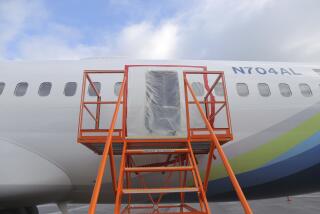Failed blowout preventer removed from BP well
- Share via
Reporting from New Orleans — Crews successfully removed the failed blowout preventer from BP’s broken oil well Friday, an important step toward killing the well for good and a hopeful development for federal investigators who view the device as key evidence that will be inspected to determine why it did not shut off the disastrous undersea gusher.
The blowout preventer was removed from the wellhead, which is 5,000 feet deep in the Gulf of Mexico, at 1:20 p.m. Central time, BP spokesman Daren Beaudo said in an e-mail Thursday. The oil is now being suppressed by a concrete plug that was injected into the well in early August.
The blowout preventer will likely be hauled to the surface sometime today and will then be taken by barge to a NASA facility in New Orleans, a federal official said.
“We will continue to closely monitor progress as the BOP, which along with the latching device weighs approximately 1 million pounds, is lifted to the surface in the next 24-36 hours,” said Thad Allen, the federal spill-response chief.
BP and government experts said they conducted extensive testing to ensure that the concrete would hold. Next, crews will affix a new, stronger blowout preventer. Officials do not expect oil will leak from the well during the replacement process.
Government officials said the new device will help them deal with any surges in pressure when they intersect the well from the bottom and inject it with mud and cement as part of a “bottom kill,” which is intended to provide an enduring seal for the well.
Allen has said that the final kill operation might start after Labor Day, but he has warned that the timeline was subject to changing conditions, including rough weather.
The Deepwater Horizon drilling rig explosion on April 20 killed 11 crew members, and the well spewed an estimated 4.9 million barrels of oil, the largest offshore oil spill in US history.
More to Read
Sign up for Essential California
The most important California stories and recommendations in your inbox every morning.
You may occasionally receive promotional content from the Los Angeles Times.









